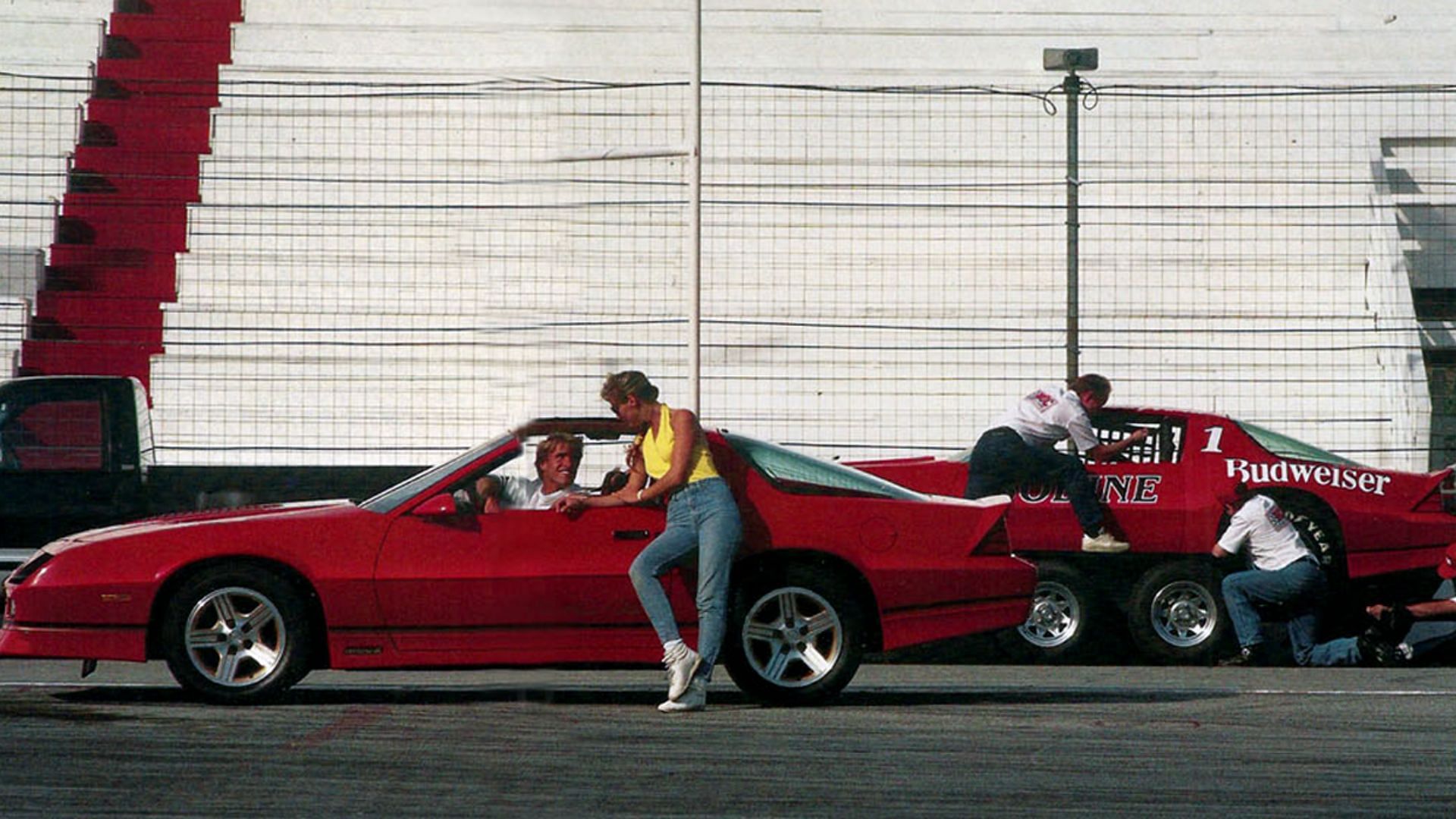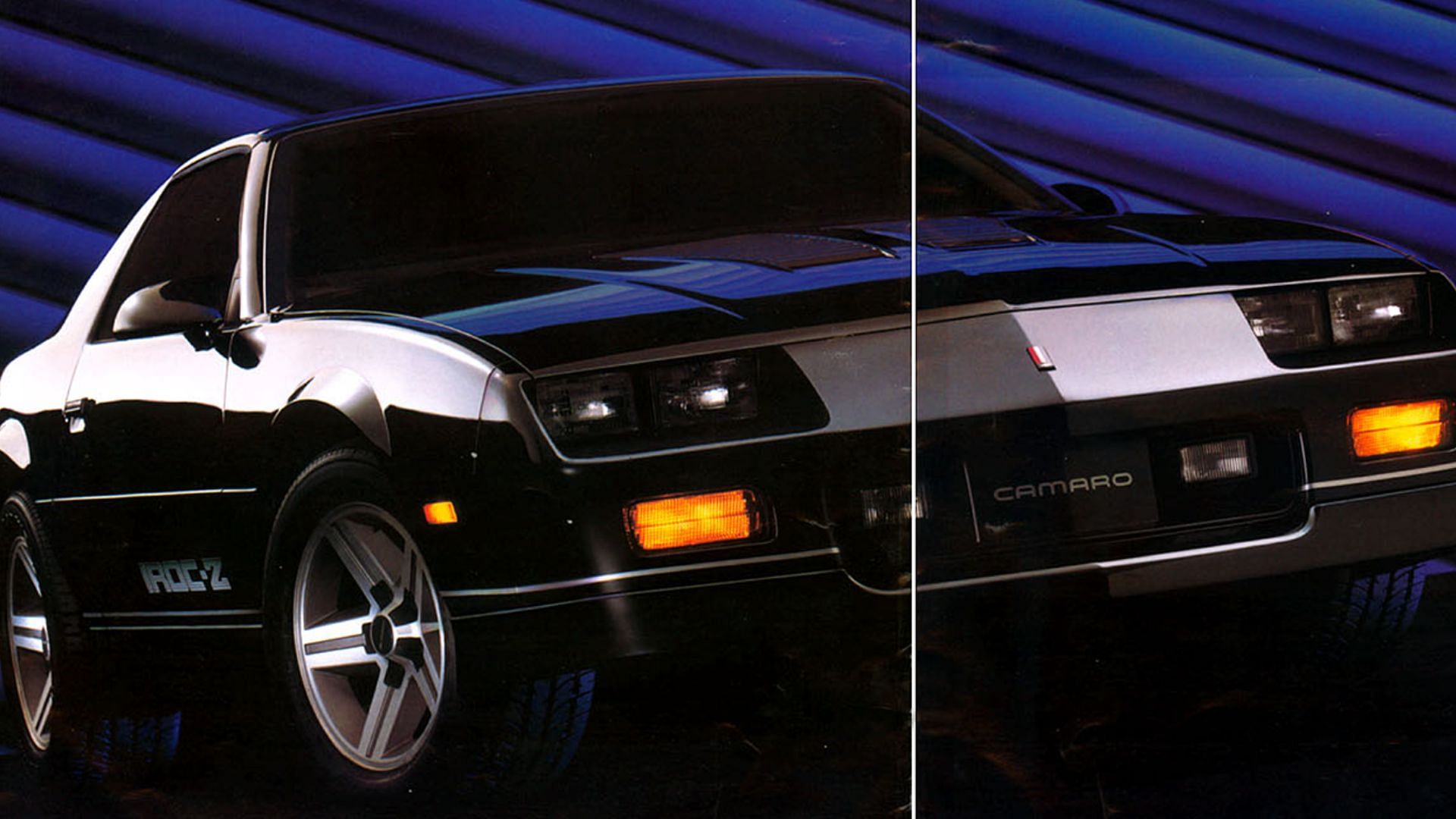The Evolution of the Camaro IROC-Z
The Camaro IROC-Z has a fascinating history, bridging the gap between the race track and showroom. Debuting in 1984, this iconic Camaro paid homage to the International Race of Champions series. With racing pedigree and performance enhancements like a tuned suspension and 5.0L Tuned Port Injection V8, the IROC-Z allowed everyday drivers to experience the thrill of a race car. This remarkable fusion of race car DNA and consumer appeal has cemented the Camaro IROC-Z as an enduring classic.
Published July 19, 2024

A Bridge Between Worlds
In the annals of automotive history, the year 1984 stands as a milestone—a year when the Camaro IROC-Z emerged, heralding a remarkable shift from a purebred race car to a consumer-oriented powerhouse.
Its name, an ode to the International Race of Champions (IROC) series, was more than just a moniker; it was a declaration of its racing pedigree.
This remarkable Camaro, essentially an upgrade package for the Z28, boasted substantial improvements in its suspension, brakes, and tires. In its inaugural year, the IROC-Z showcased a "Tuned Port Injected" 5.0-liter V8 engine, generating a commanding 215 horsepower, and offered drivers the choice between automatic and manual transmissions.

But despite its racing DNA, the IROC-Z wasn't a sales juggernaut, with production running a mere six years until 1990. However, its significance lies not in its sales figures but in its ability to bridge the gap between race cars and consumer vehicles.
It allowed everyday drivers to savor the thrill of a race car on the open road. This unique blend of performance and accessibility rendered it highly sought after during its production years.
Originating from its involvement in racing series such as SCCA's Showroom Stock and the Canadian Players Challenge, the IROC-Z was engineered for track domination. Its hidden gem, the 1LE option, was a well-kept secret, accessible only to those who ordered specific V-8 engines and could prove their participation in racing events like IMSA or SCCA.

Today, the IROC-Z's legacy endures as enthusiasts embrace aftermarket modifications, transforming it into a formidable track machine.
Many IROC-Z owners continue to push the limits of their cars in road racing and lapping events—a testament to its enduring appeal and influence in the automotive world. This unique fusion of race car DNA and consumer-friendly features has etched the Camaro IROC-Z into the hearts of automotive enthusiasts as a timeless classic.
Racing Roots and the Birth of IROC-Z
The IROC-Z owes its genesis to the high-octane excitement of the International Race of Champions (IROC) series—a brainchild of motorsport visionaries Les Richter, Roger Penske, and Mike Phelps.
This series emerged as the equivalent of an all-star game in North American auto racing, featuring drivers from diverse disciplines like Indy Car, Formula 1, SCCA, World of Outlaw, and NASCAR. It found its home on the oval tracks, captivating both die-hard NASCAR fans and international racing enthusiasts.
Chevrolet, synonymous with American muscle, proudly sponsored the IROC series, giving birth to the iconic IROC-Z nameplate. Debuting in 1984, the IROC-Z was a performance-driven iteration of the Camaro, paying homage to the illustrious IROC series. Designed with racing prowess in mind, the IROC-Z sought to level the playing field for drivers from various racing backgrounds.
Chevrolet's decision to name this remarkable trim model after the IROC series underscored its commitment to high-performance vehicles. From 1985 to 1990, the IROC-Z proudly adorned the Z/28, a badge that paid homage to the International Race of Champions series.
It wasn't just a car; it was a statement—a testament to the spirit of competition that defined the IROC series. With its undeniable link to its racing roots and an array of performance features, the IROC-Z carved its place as a standout model in the Camaro lineup, beckoning enthusiasts and collectors alike.
The Evolution of the Camaro IROC-Z
The third generation of the Chevrolet Camaro, produced from 1982 to 1992, offered a spectrum of models, including the Berlinetta, RS, Z28, and the distinguished IROC-Z variant. In 1985, Chevrolet introduced the IROC-Z as an optional package on the Z28, paying tribute to the International Race of Champions.
This version packed a punch with performance enhancements that included a refined suspension, lower ride height, Delco-Bilstein shocks, larger sway bars, and a notable "wonder bar" steering/frame brace. Additionally, an optional Tuned Port Injection system, borrowed from the Corvette, injected even more muscle into its performance arsenal.

Car and Driver recognized the Camaro IROC-Z on its esteemed Ten Best list in 1985, showcasing its prowess. Under the hood, it offered three engine choices: the 215 hp 305 c.i. 5.0-liter TPI LB9, the 155 hp 4-bbl 305 LG4, and the 190 hp 4-bbl High Output 305 L69. Notably, a mere 2,497 L69 IROC-Z models rolled out in 1985.
The LB9 engine exclusively graced the Z28 and the IROC-Z with the TH700-R4 automatic transmission. A limited number of 205 IROC-Zs in 1985 sported the LB9 305 with the G92 Performance Axle Ratio.
As the '90s approached, the IROC-Z faced declining sales, leading to its discontinuation by 1990. Despite not being a sales sensation, it fulfilled its role as the ultimate third-generation Camaro performance vehicle.

However, the IROC-Z era lives on, with the third-generation Camaro, including the IROC-Z and Z28 models, experiencing a resurgence among classic muscle car collectors. The IROC-Z, steeped in racing heritage and performance enhancements, remains a compelling chapter in the Camaro's storied history.
The Transition to the Showroom and the Enigmatic 1LE Package
The 1LE package, an enigmatic gem of the late '80s Camaro era, transformed IROC and Z28 Camaros into rare and coveted automobiles.
Unlike today's overtly track-focused 1LE packages, the late '80s version remained shrouded in secrecy, with no mention in dealership literature or advertising, and no checkbox on order forms. To unlock this performance powerhouse, you had to possess insider knowledge and a desire to race in IMSA or SCCA events.
The third-generation IROC-Z, making its debut in 1985, marked a significant leap forward in technical innovation and design compared to its predecessors.

It sported a more aerodynamic body, improved suspension, and a tuned port injection system for the V8 engine. The IROC-Z was the pinnacle of Camaro performance during its era, striking a balance between power and affordability. Optional V8 engines further amplified its performance capabilities.
The enigmatic 1LE package, available only to those with racing credentials, enhanced the IROC-Z's track prowess with a larger fuel tank, upgraded brakes, and special suspension tuning.
Despite its challenges, including less-than-optimal engine choices, production costs, and weight issues, the IROC-Z's enduring appeal remains intact. Its exceptional blend of responsive handling, high-performance capability, and everyday drivability ensures its status as a classic and highly sought-after vehicle.
In fact, it commands a significant premium over its contemporaries, exemplifying its lasting impact on automotive history. A 1989 Camaro IROC-Z 1LE in excellent condition is valued at approximately $37,000, according to Hagerty valuation data, making it a timeless icon in the world of American sports cars.
Write a comment
Comments
No Comments Yet






